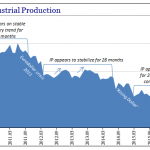When the entire stock market drops as quickly as it did last week, investors are more worried with just keeping their money instead of growing it. But, dividend investors have a unique advantage over other equity investors for profiting during troubling market conditions. Tim Plaehn explains how.
The stock market is going through a serious bout of volatility. That’s business news speak for mostly falling share prices. The fears in the stock market have centered around a slowing Chinese economy, problems in the developing world, possibly higher interest rates, and a crashing commodities sector. With every sector in the market selling off, investors can pick up non-international trading, non-energy, not too interest rate sensitive high-yield stocks at lower prices and much higher yields compared to just a few months ago.
The equity real estate investment trust –REIT– sector should not really be affected by the fears that are causing a general correction in the stock market. These companies primarily own U.S. located office buildings, medical facilities, industrial buildings, shopping centers, hotels and apartment buildings. What is happening in China should not affect the owner of an industrial space in Michigan, and falling energy prices are probably good for the hotel/lodging business. A small increase in interest rates will not affect the ability of a quality REIT to grow its dividend rate. Yet, the Dow Jones Equity All REIT Index is down 17% since a peak at the end of January 2015 and down 9% in just the last week. Lower share prices mean higher yields. Buying higher yield REIT shares now lets you collect nice dividend checks every month or every quarter, and not worry if the market continues to be volatile.
I am pretty much an agnostic when it comes to the different REIT sectors. I start my top down analysis with a spreadsheet that lists the majority of property-owning REITs with their market caps, current yields, and dividend growth rates. For equity REITs, I only consider companies that have a history of growing dividends. I have no use for a management team that can’t figure out how to grow the cash income stream paid to shareholders. I review my database for attractive combinations of yield vs. dividend growth. For example, I will be interested in an above average 7% yield, coupled with a moderate 4% annual dividend growth rate. But I also want to pair high-yield picks with high growth rate REITs, so if I can find a REIT growing dividends by 15% per year, a 3.5% to 4% yield is acceptable. When I find an attractive yield plus growth combination in a specific REIT, I start my in-depth cash flow analysis, looking at management strategies, cash flow vs dividend rates and how the company will sustain future growth. Only the best managed REITs will make the cut to be a recommendation to my newsletter subscribers.












Leave A Comment